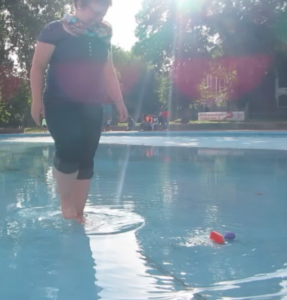Using air for reducing ship resistance and for propulsion. [deutscher Text unten]
One of my favorite toys at the moment: My new hovercraft.
Unfortunately, it has a couple of issues. As A and I realized in a field test: it does not like wind.
And even under control conditions in a lab, it doesn’t always go forward – usually it likes going sideward a lot better.
But all issues of my hovercraft aside, there are a couple of interesting things to be learned from this toy. For example how it propels itself forwards by kicking back air. And how it rides on a layer of bubbles, which, as air lubrication, is used as an energy-saving technique for ships. The air bubbles, trapped underneath the ship’s hull, reduce resistance. In the context of carbon emissions and fuel prices, this technology looks pretty interesting!
—
Seit einiger Zeit habe ich ein neues Spielzeug: Ein Hovercraft. Wenn man den Ballon aufbläst und auf das Boot aufsetzt, kann man das Boot ins Wasser setzen und durch die aus dem Ballon ausströmende Luft das Boot antreiben. Das ist einerseits ein lustiges Experiment, andererseits zeigt es sogar ein Phänomen, was in der Entwicklung von neuen Schiffen heutzutage auch genutzt wird: Luftbasen, die unter den Schiffsrumpf geblasen werden, um die Reibung zu verringern. Das hat sowohl was den Treibstoffverbrauch als auch für den CO2-Ausstoß natürlich interessante Konsequenzen. Hoffentlich will auf der Juniorakademie jemand mit mir und meinem Hovercraft spielen! Dafür habe ich es auf jeden Fall mitgenommen ;-)
